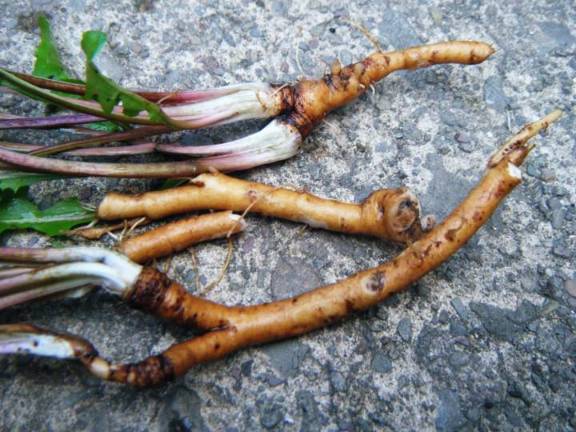The lawn wrecker’s abundant upside




Winter’s earth safekeeps an abundance of nutrient rich roots, some of which still sprout forth hearty greens and brave flowers. Among them, dandelion. That’s right, the detested weed, the wrecker of lawns, the garish show-stealer in your flower garden. But likely you’ve heard rumor that this symbol of unkempt landscapes offers much more than mere frustration.
Dandelion’s scientific name, Taraxacum officinale, provides evidence that it was appreciated long before it fell into scorn. Taraxacum, derived from the Greek words taraxos and akos, quite literally translates to “disorder remedy.” Officinale is Latin, from “officina,” which referred to an apothecary, and was a term later applied to plants that were recognized by the United States Pharmacopeia as medicinal.
Before the advent of European settlers, this pervasive weed didn’t exist in our landscape. Planted in gardens, dandelion’s wind-dispersed seeds escaped captivity, landing in nearby meadows and human disturbed areas. Now it’s here to stay, so let’s put it to use.
This time of year, when few wild greens abound, dandelion’s deeply toothed leaves can be found cleverly persisting. Leaves contain beta carotene, calcium, copper, and manganese, and are higher in iron, riboflavin and vitamin E than cultivated greens like spinach and kale. Eat them raw, sauteed with olive oil and vinegar, or simmered in soup. In addition to their nutrition, they convey a strong diuretic action when steeped in hot water for a tea. Add a squeeze of lemon for vitamin C and a bit of honey for flavor.
Dandelion roots provide sustenance. They contain inulin, a prebiotic constituent that feeds our healthy gut flora, contributing to digestive wellbeing and immunity. Roots also stimulate the secretion of digestive juices required to break down food, assimilate nutrients and promote elimination. Dandelion root tea is simple: dig, wash, dice, simmer and strain. But roots can also be consumed as a veggie. Sliver raw and add to salads, dice and sauté with tamari and garlic as a side, or slice and roast in the oven as dandelion chips.
Flowers are a prize. Pinch off the flowering tops, batter and fry for fritters or pull tufts of yellow petals – more accurately called florets – and sprinkle them in crepes, blend into soft butter or cheese or garnish your plate with their sunny color.